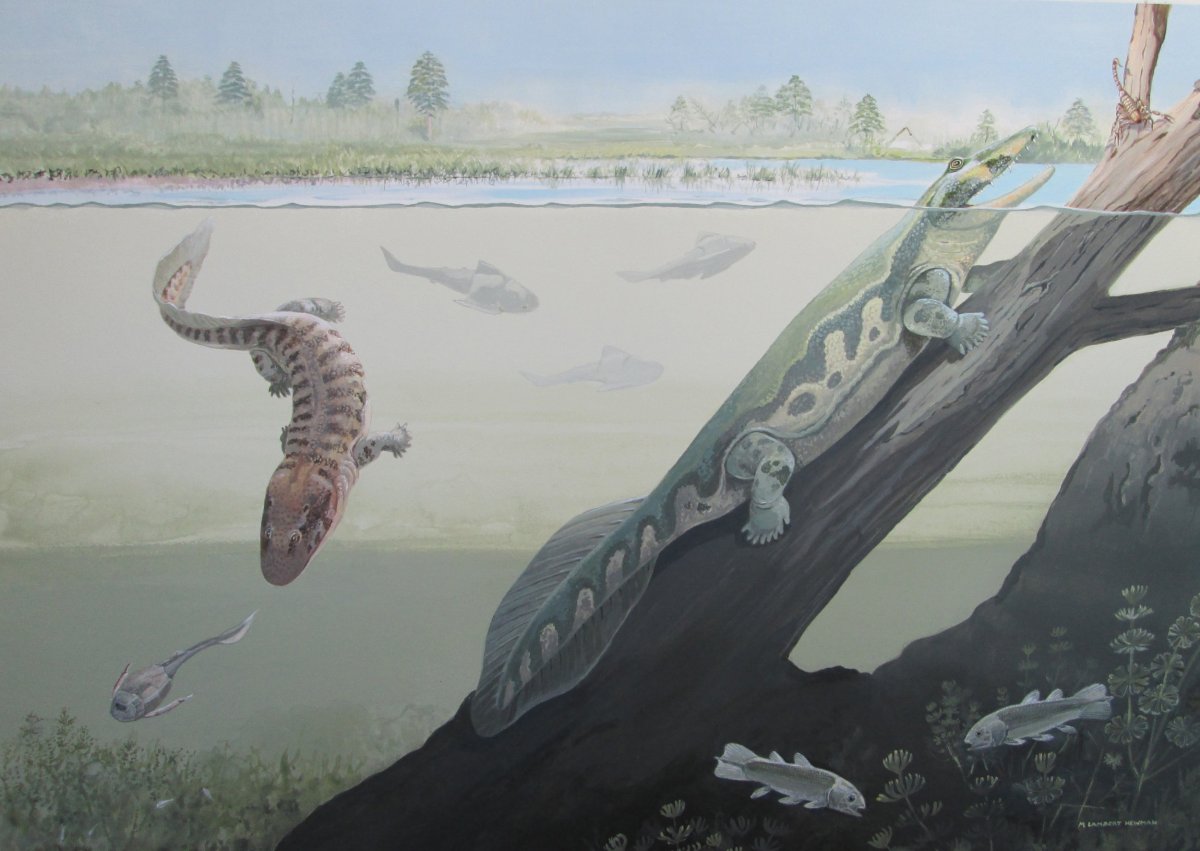Scientists had long believed the very first tetrapods—a superclass of four-limbed vertebrates including everything from humans to dinosaurs—evolved from fish and emerged from the sea in the warm, wet tropics. Now, the partial fossils of two new species have turned this concept on its head.
The earliest tetrapods discovered outside of tropical and sub-tropical zones, the fossils were unearthed at a site called Waterloo Farm in South Africa. Hundreds of millions of years ago—back when Africa was a chunk of the Gondwana supercontinent—these early pioneers would have lived in the Antarctic circle.

Scientists trace the original locations of ancient fossils by mapping the movement of continents over millions of years. Although Waterloo Farm wasn't frozen back in the ancient Devonian period—which stretched from 420 to 360 million years ago—it still faced nights that lasted for weeks in the dead of winter.
"There would certainly have been several months of winter darkness, as well as midnight sun in the summer," paleontologist Per Ahlberg of the University of Uppsala in Sweden told Reuters. Ahlberg is one of the authors of a study of the fossils published Friday in the journal Science. Waterloo Farm, he said, was likely a chilly tidal estuary. In winter, it probably snowed.
Read more: Girl finds 475-million-year-old trilobite fossil on a walk
"So we now know that tetrapods, by the end of the Devonian, lived all over the world, from the tropics to the Antarctic circle," added study author Robert Gess, a paleontologist based at the Albany Museum in Grahamstown, told Reuters. "So it's possible that they originated anywhere and that they could have moved onto land anywhere. It really broadens the scope of possibilities."
The new species, named Tutusius umlambo and Umzantsia amazana, pre-date the next earliest African tetrapod fossils by some 70 million years. Gess and Ahlberg built a picture of the animals from just a few fossilized bones. The researchers think they had heads like crocodiles and tails like fish. Tutusius—named for South African cleric Desmond Tutu—probably stretch about a yard long. Umzantsia was smaller at 28 inches.
Read more: Crocodiles with dolphin tails: fossil of mysterious new species plugs evolutionary gap
Controlled explosions by the South African National Roads Agency revealed the Waterloo Farm site, which has yielded a number of important fossils, a University of the Witwatersrand, Johannesburg, statement reported. Gess is based at the Albany Museum as part of the country's Centre of Excellence in Palaeosciences, which is hosted by the university.
Uncommon Knowledge
Newsweek is committed to challenging conventional wisdom and finding connections in the search for common ground.
Newsweek is committed to challenging conventional wisdom and finding connections in the search for common ground.
About the writer
Katherine Hignett is a reporter based in London. She currently covers current affairs, health and science. Prior to joining Newsweek ... Read more
To read how Newsweek uses AI as a newsroom tool, Click here.








